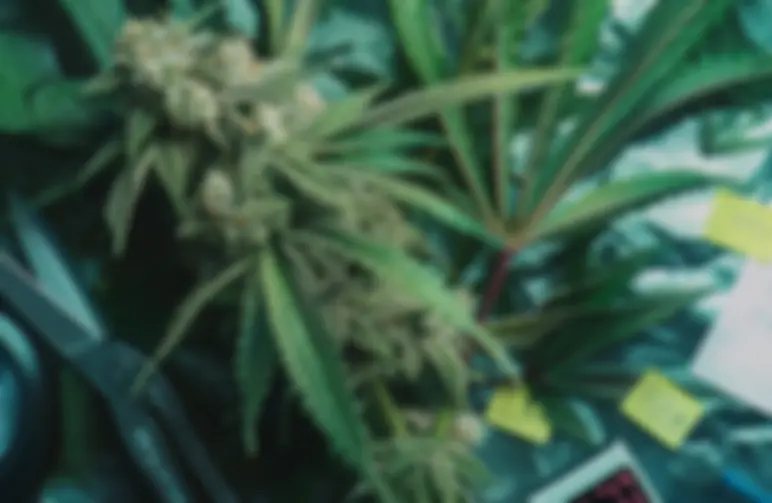Let’s be honest, most home growers want one thing: sticky jars of bud sooner, not later. But cannabis is a patient plant, and flowering time isn’t something you can rush with wishful thinking. Genetics rule the clock, sure, but smart growers know a few seasoned tricks to shave days (sometimes weeks) off the finish line, without gutting your yield or potency.
So whether you’re growing indoors under LEDs, running a summer outdoor patch, or juggling both, here are six proven ways to shorten the flowering time of your cannabis plants and get to that first smoke a little faster.
1. Choose Fast-Flowering or Autoflower Genetics
This is the biggest cheat code. If speed is the priority, start at the seed. Autoflowering cannabis doesn’t wait for a 12/12 light cycle; it flowers by age, often wrapping up in 8–10 weeks from seed. Many new growers underestimate how big a difference this makes, autoflowers are practically built for impatience so choose autoflowering seeds.
On the photoperiod side, fast-flowering hybrids and strains bred for short seasons (often labeled “early version” or “fast”) can save growers in northern climates from an October heartbreak.
Pro tip: Autoflowers trade yield for speed. They’re perfect if you want a few quick crops per year, but less ideal if you’re chasing massive outdoor trees.
2. Flip to 12/12 Sooner
With photoperiod plants, the most obvious way to shorten the overall cycle is to initiate flowering earlier. Instead of vegging for 6–8 weeks, flip them to 12 hours of light / 12 hours of dark after just 2–3 weeks of veg.
This reduces the total size and yield, but you’ll still get dense colas, just on a smaller scale. This “Sea of Green” (SOG) method is used commercially to crank out fast, uniform harvests by growing many small plants instead of a few monsters.
Think of it like espresso instead of a cold brew: less volume, but still powerful.
3. Manipulate Light Hours in Flower
Cannabis evolved to bloom as the days shorten in late summer and fall. By reducing light hours below 12, you can convince your plant that winter is really bearing down. Dropping to 11/13 or even 10/14 (light/dark) can accelerate bud development.
Outdoor growers mimic this with blackout tarps, covering their plants early in the evening to simulate shorter days. This “light dep” technique is a staple of greenhouse growing, helping farmers finish before seasonal rains or law enforcement interest.
Trade-off warning: The less light, the less energy for photosynthesis. You may finish earlier, but yields can shrink if you push it too far.
4. Dial In Your Environment
You won’t cut weeks off your flowering period by neglecting the basics. Stress, poor nutrition, or fluctuating conditions slow plants down, sometimes stalling flowering altogether.
To keep things on schedule:
- Temperature: Day temps 24 °C-28 °C with slight nighttime drops.
- Humidity: 40–50% in flower to prevent mold and keep plants comfortable.
- Airflow: Constant circulation keeps CO₂ levels stable and avoids microclimates.
- Nutrition: Ease off nitrogen after flip. Excess N delays flower and makes buds leafy.
A smooth, stress-free bloom cycle ensures your plants stay on track for their natural timeline, no stalls, no setbacks.
5. Stress & Training: Less Can Be More
Heavy training (topping, mainlining, aggressive LST) can slow growth if applied late. If your goal is speed, avoid major plant surgery once flowering starts. Stick to gentle defoliation and minimal bending.
Some growers experiment with “stress hacks” to speed ripening, like cutting light hours drastically or restricting root space. While these can force plants to finish early, they usually cost yield and potency. Consider them last-resort tactics, not standard practice.
Old grower wisdom: “Don’t make your plants panic. They’ll finish faster, sure, but like a sprinter collapsing at the finish line.”
6. Try a Staggered Harvest
Here’s a subtle trick: harvest mature buds first and let the lower or slower branches keep ripening. This can shorten the wait for your first smokeable stash while giving other colas extra time to swell.
It’s a win-win: you save a week or two on part of your harvest, and you might even improve airflow and light penetration for what’s left on the plant.
Wrapping It Up
You can’t completely rewrite cannabis’ internal clock. A 10-week Haze is never going to magically become a 6-week indica. But with smart genetics, light tricks, and dialed-in care, you can reliably shave days or weeks off your flowering period, and sometimes that’s all you need to get jars curing before the weather turns or your stash runs out.
Bottom line: Speed is possible, but never free. Expect a trade-off in yield, plant size, or bud density when you force things. The real art is finding your sweet spot between time, quality, and output.
FAQs: Shortening Cannabis Flowering Time
Q1: Can I really cut flowering time in half?
No. Genetics set the baseline. At best, you can shorten by 1–3 weeks with light tricks or early flips.
Q2: Do autoflowers finish faster than photoperiods?
Yes. Autoflowers usually finish in 8–10 weeks total. Photoperiods often take 12–16 weeks (veg + flower).
Q3: Will lowering light hours below 12/12 hurt my yield?
It can. Dropping to 11/13 or 10/14 speeds flowering but reduces photosynthesis, which may cut yields.
Q4: Does nutrient choice affect flowering speed?
Yes. Too much nitrogen delays bloom. Switching to bloom nutrients with higher phosphorus and potassium helps plants stay on track.
Q5: What’s the fastest way for beginners to get buds?
Start with autoflowers. They’re simple, quick, and don’t rely on light schedules, perfect for your first harvest in under 10 weeks.










